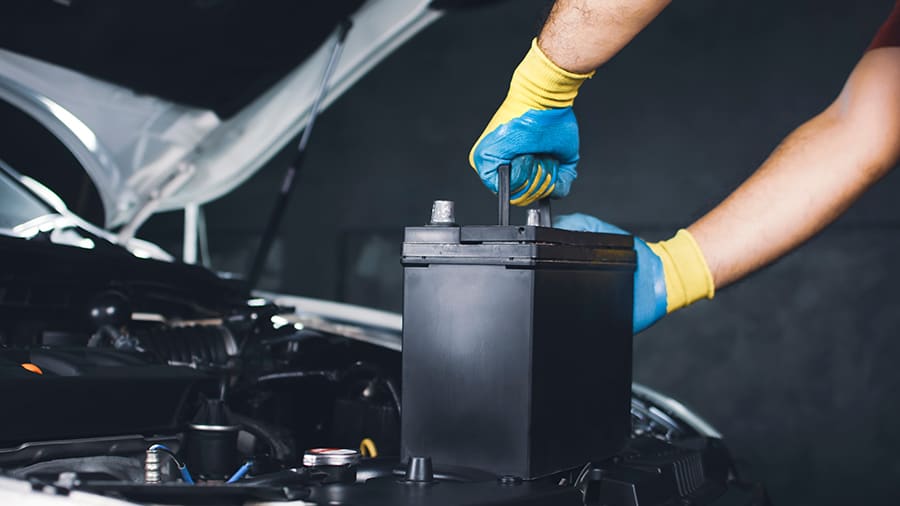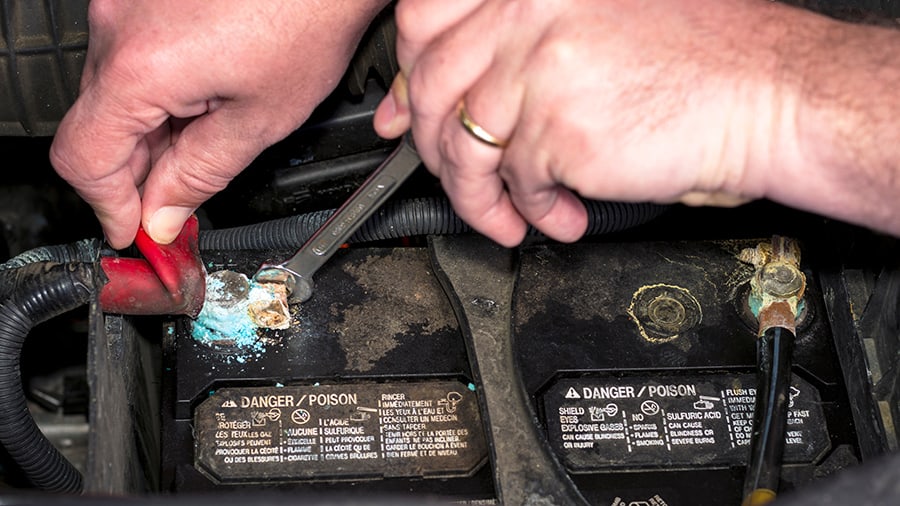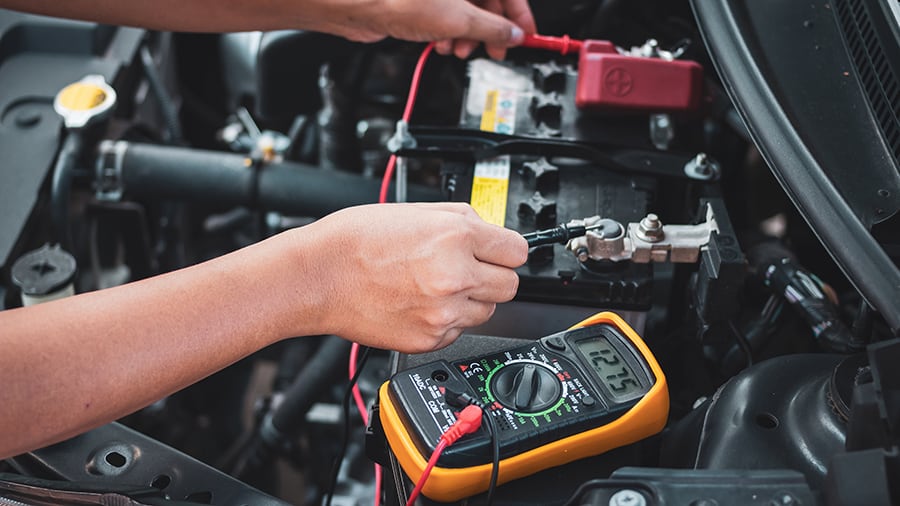Why Does My Car Battery Keep Dying? Top Tips & Solutions
Are you puzzled because your car’s battery keeps letting you down? Every year, dead batteries leave millions stranded without a working vehicle. In this post, we’ll explore the top reasons for battery failures and provide practical advice to keep your engine starting every time.
Understanding Your Car Battery
Your car battery is an essential component that provides the power needed to start your vehicle and operate its electrical systems. Understanding how it works and the common causes of a dying battery can help you diagnose and prevent issues in the future.

How it works
A car battery stores energy to start your engine and power electrical systems when the engine is off. It converts chemical energy into electrical power, allowing important features like headlights, radio, and air conditioning to work.
The alternator charges the battery while you drive by turning mechanical energy into electrical current.
A typical lead-acid car battery contains plates made of lead dioxide and sponge lead. These sit in an electrolyte solution of water and sulfuric acid. When your key turns in the ignition, or you push a button to start your car, a reaction happens between these materials.
This reaction creates electricity that flows through wires to start your motor and run things like wipers or dashboard lights.
Even when turned off, cars use some power for things like clock memory. If something draws more energy than it should overnight—a condition known as parasitic drain—the battery can die.
Factors such as extreme cold or heat stress further reduce batteries’ ability to hold a charge over time.
Loose connections can disrupt the flow of electricity from a battery; corrosion can block it entirely. Both may cause problems starting up or unexpectedly kill your battery.
Common causes of a dying battery
Extreme temperatures, excessive use of vehicle accessories, and mechanical problems can cause a car battery to die. Leaving headlights on or experiencing a “parasitic draw” can rapidly drain a car battery.
Loose or corroded connections are common culprits for repeated battery failure and persistent electrical drains due to undetected issues. Even a new battery may fail if there are underlying electrical system problems, such as poor connections or lights that don’t turn off properly.
If the car sits for only a few days and the battery dies, it could indicate an issue with the alternator or other electrical components.
Checking for Common Issues
Check for loose or corroded battery connections and any possible parasitic drain from electrical components. Leaving lights on can also be a common issue, leading to a dying battery.
Loose or corroded battery connections

Loose or corroded battery connections can lead to repeated car battery issues. Poor connections disrupt the flow of electricity, resulting in a drained battery. It’s essential to regularly clean and inspect these terminals as part of routine maintenance to prevent such problems.
Persistent electrical drains can cause a car battery to die repeatedly, making it crucial to promptly address loose or corroded connections. Regularly cleaning and tightening the battery connections is vital for maintaining a healthy electrical system in your vehicle, ensuring smooth operation, and preventing unexpected breakdowns on the road.
Parasitic drain
Parasitic drain, phantom drain, or key-off battery drain occurs when electrical devices draw power from the car’s battery, even when the ignition is off. This can be due to malfunctioning components like a faulty relay, poorly wired aftermarket accessories, or a defective control module.
If left unchecked, parasitic drain can lead to repeated car battery failure and should be diagnosed promptly.
You can use a multimeter to measure the current draw with the car turned off to detect parasitic drains. A regular reading should be around 50 milliamps or less. Any higher could indicate an issue.
Leaving lights on
When lights, such as the headlights or interior lights, are left on, it can drain the car battery. This is a common mistake that many drivers make, especially if they forget to turn off the lights after parking their vehicles.
Even though modern cars have features to alert drivers about leaving lights on, it’s still easy to overlook this and end up with a dead battery. The constant use of these electrical components without the engine running leads to battery drainage over time, resulting in a dead battery when you next try to start your car.
An important note to remember is that leaving lights on affects traditional bulbs and impacts newer LED lights found in modern vehicles—keywords: Dead car battery, Battery draining, Car maintenance.
Signs of a Dying Battery
If you are experiencing slow cranking, dim headlights, electrical problems, or a swollen battery, these are all signs that your car battery may be dying. Recognizing these indicators and taking action before they fail is essential.
Slow cranking
Slow cranking when starting your car can signal a dying battery. It may indicate that the battery doesn’t have enough power to turn the engine over, potentially caused by corrosion buildup or a defective charging system.
Extreme weather impacts like cold temperatures can also slow down the cranking of your car’s battery. If you notice this symptom, it’s essential to promptly check for loose connections and corrosion buildup on the battery terminals to prevent further issues with your vehicle’s electrical system.
Dim headlights
Dim headlights can be a sign of a dying car battery. When the battery is low, it affects the power supply to the lights, causing them to appear dimmer than usual. This could indicate that the battery is struggling to provide enough energy for all electronic components in the vehicle, including the headlights.
If you notice dim headlights and other signs like slow cranking or electrical issues, it’s crucial to have your battery checked promptly to prevent further problems.
Extreme weather conditions and loose connections are common reasons for dim headlights, as they directly impact the car battery’s performance. It’s essential to address any issues promptly and ensure proper maintenance and testing of your car battery regularly to prevent repeated dimming headlights, signaling a failing battery.
Electrical problems
Electrical problems in a car can lead to repeated battery drain. Corroded or loose battery connections are common culprits for this issue, causing the battery to die repeatedly. Other electrical problems, like a dome light that remains on or persistent parasitic draws, can drain the battery overnight.
Even when the car is off, various electrical problems can drain the car battery, emphasizing the need to check all electrical components thoroughly.
Extreme weather conditions could cause swollen batteries and signal potential charging system problems. Moreover, if a brand new battery dies after sitting for a few days, it might indicate an underlying alternator or other electrical component issues requiring immediate attention and professional intervention.
Swollen battery
A swollen car battery could indicate overcharging, leading to a shortened lifespan. High under-hood temperatures in extreme weather can also cause the battery to swell. If your car’s battery is swollen, it may be time for a replacement to prevent further damage and potential hazards.
In addition, excessive heat or overcharging from the alternator can cause the battery’s internal components to expand and distort. This can decrease performance and pose a safety risk due to potential leaks or ruptures.
A professional should promptly inspect swollen batteries to determine if replacement is necessary for the continued safe operation of your vehicle.
Testing and Maintenance

Check the voltage of your car battery using a multimeter and ensure it is within the recommended range. Test for parasitic drain by disconnecting the negative terminal and using an ammeter to measure current flow.
Regularly maintain connections, remove corrosion, and inspect for any signs of damage or wear on the battery.
Checking voltage and using a multimeter
To check your car battery’s voltage, connect the multimeter’s positive (red) probe to the positive terminal of the battery and the negative (black) probe to the negative terminal. Set the multimeter to DC voltage and read the display.
A healthy battery should show around 12.6 volts or higher when not used.
Using a multimeter helps diagnose if any voltage irregularities could indicate an issue with your car battery, charging system, or parasitic drain. Regularly checking voltage can help catch problems early, leading to timely maintenance and preventing repeated battery failures due to electrical issues.
Testing for parasitic drain
To identify parasitic drain, perform a voltage drop test on each fuse in the car’s fuse box. Use a multimeter set to measure voltage and place the negative lead on the battery’s negative terminal.
Then, investigate each fuse by touching its terminals with the positive multimeter lead; a significant voltage reading indicates a parasitic drain. It could be related to systems like interior lights, radio memory, or faulty control modules drawing current when they shouldn’t be.
In detecting an abnormal draw, consult a professional for further diagnosis, as resolving this issue may require advanced electrical troubleshooting skills. Addressing parasitic drain early can prevent repeated battery drainage and avoid unnecessary costs associated with frequent battery replacements.
Maintaining connections
Ensure tight and clean battery connections using a wire brush and corrosion-removing solution. This prevents electrical resistance that can drain the battery. Additionally, make sure to secure the terminals firmly with no movement.
Check for any signs of wear or damage on the battery cables and replace them if necessary to avoid power loss. Periodically inspect your vehicle’s connections as part of regular maintenance to prevent future issues.
Removing corrosion
To remove corrosion from the battery, disconnect the negative terminal before removing the positive one. Use baking soda and water to scrub the corrosion with a brush or old toothbrush.
Avoid getting the solution into the cells, as it can damage the battery. After cleaning, rinse with water and remove all traces of baking soda. Finally, use a battery terminal protectant spray or petroleum jelly on both terminals to prevent future corrosion.
Regular maintenance is necessary to prevent corrosion buildup on your car’s battery terminals. Additionally, checking for any signs of corrosion during routine checks can help maintain a healthy car battery over time.
Dealing with Extreme Weather and Charging System Problems
Extreme weather, such as extreme heat or cold, can impact the life and performance of your car battery, while a bad alternator can also cause frequent battery issues.
Impact of harsh weather on batteries
Harsh weather, like extreme heat or cold, affects car batteries significantly. In high temperatures, the evaporation of battery fluid accelerates, leading to internal damage and shortening its lifespan.
Conversely, in freezing conditions, a battery’s capacity decreases, diminishing its ability to start the engine. Moreover, temperature fluctuations can cause expansion and contraction of the battery components, which may result in internal damage over time due to stress on the cells.
Extreme weather also increases the load on your vehicle’s electrical system. In hot weather, air conditioning puts more strain on your battery, while in cold climates, accessories like heaters demand more power from the already strained battery.
Signs of a bad alternator
A bad alternator can cause various issues with your car’s electrical system. Look out for warning signs such as dimming headlights while driving, dashboard lights flickering or unusually bright, and a persistent smell of burning rubber near the engine.
Keep an eye on your battery light indicator – if it stays lit after starting the car or comes on while driving, it could signal an issue with the alternator. Also, difficulty starting your vehicle or unusual noises from under the hood might indicate a failing alternator.
If you notice any of these signs, it’s crucial to have your alternator inspected and repaired promptly to avoid further damage and unexpected breakdowns. Regular maintenance checks by a professional can help identify potential problems early and prevent more extensive repairs.
Potential repairs and costs
Repairing loose or corroded battery connections is inexpensive, costing around $20 to $50 for a professional mechanic’s service. Addressing issues with the alternator can range from approximately $350 to $500, including parts and labor.
If needed, replacing a car battery usually costs between $50 and $200, depending on the type and brand of the battery. Regular maintenance can help prevent major repairs and save on potential costs associated with repeatedly dying car batteries.
Maintaining good electrical connections and promptly addressing any underlying issues can extend your battery’s lifespan while reducing future repair expenses. Regularly checking for signs of corrosion or loose connections, testing the charging system, and monitoring parasitic drains are essential steps in avoiding potentially costly repairs related to failing car batteries or electrical systems.
Tips to Prevent a Repeatedly Dying Battery
Proper maintenance, avoiding excessive short trips, upgrading to a premium battery, and finding ways to keep your battery charged longer can all help prevent your car’s battery from repeatedly dying.
Proper maintenance
Regularly maintaining your car battery is crucial to prevent it from dying repeatedly. Clean the battery terminals and cables using a mixture of baking soda and water to remove any corrosion, ensuring a solid connection.
Inspect the battery for any signs of physical damage or swelling, which may indicate the need for a replacement. Additionally, regularly checking the battery’s voltage level using a multimeter can help identify potential issues early on, allowing for timely intervention and preventing unexpected breakdowns.
Lastly, consider investing in a smart charger to maintain the battery’s charge during long periods of inactivity, especially in extreme weather conditions that could impact its performance.
By staying proactive with maintenance routines such as cleaning, inspecting, and monitoring voltage levels, you can extend the lifespan of your car battery and minimize the likelihood of encountering frequent dead battery situations.
Avoiding excessive short trips
To prevent a car battery from dying, limit short trips and combine errands. Short drives don’t allow the alternator to recharge the battery fully. This can lead to repeated draining of the battery due to insufficient charging.
Regularly taking long rides allows the alternator to correctly charge the battery back up.
Tip: Try consolidating tasks or considering alternative transportation methods when using your vehicle for short trips.
Upgrading to a premium battery
Consider upgrading to a premium battery for longer-lasting performance and reliability. Premium batteries are designed to withstand extreme weather conditions, reducing the risk of repeated deaths.
Unlike standard batteries, they have a longer lifespan and offer better power retention, helping avoid common drainage issues caused by alternator problems or excessive electrical drains.
Investing in a premium battery can save you from the frustration and costs associated with frequent replacements. These advanced batteries also provide better overall performance and higher resistance to drainage factors like parasitic draws or poor connections.
Upgrading ensures your vehicle’s electrical system operates optimally, effectively preventing potential issues related to battery drain.
Ways to keep your battery charged longer
Regular maintenance is crucial to keep your battery charged longer. Ensure the connections are clean and tight to prevent drain issues due to loose or corroded battery connections.
Upgrading to a premium battery with better capacity and durability can also help extend the life of your car’s battery. Moreover, avoiding excessive short trips can assist in maintaining a consistent charge level, preventing frequent drainage that impacts the battery’s lifespan.
Lastly, investing in a trickle charger for periodic use can help maintain an optimal charge when the vehicle is not frequently used.
It’s important to understand that extreme weather conditions impact batteries differently, and adopting preventive measures during harsh weather conditions can significantly aid in preserving the battery’s charge.
Conclusion
In conclusion, understanding the common causes and signs of a dying car battery is crucial for troubleshooting. Regular checks on battery connections, voltage, and maintenance are essential to prevent repeated issues.
Extreme weather and charging system problems can also significantly impact your car’s battery life. Follow these tips to prevent your car’s battery from repeatedly dying.
